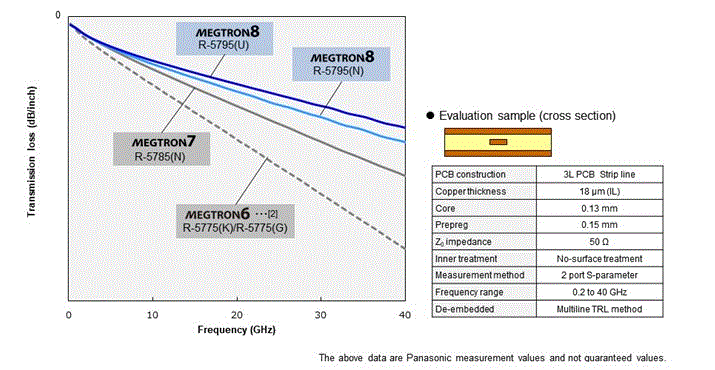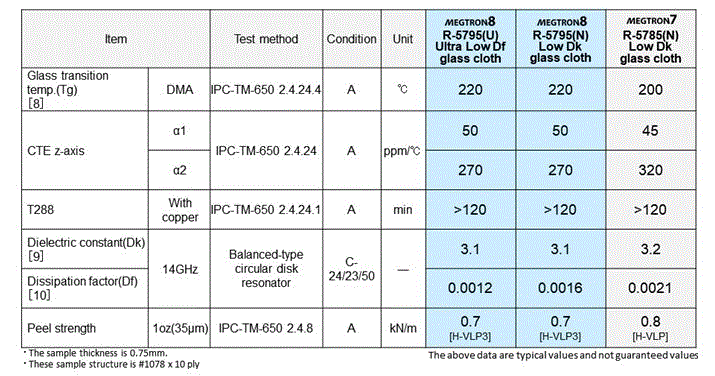Manufacturers
- Abracon
- Adam Tech
- Aerospace, Defense & Marine
- Agastat
- AIC
- AKM Semiconductor
- Alcoswitch
- Allegro
- Alps Electric
- Altera
- AMI Semiconductor
- AMP
- ams
- Analog Devices (ADI)
- Aptina Imaging
- Atmel
- Avago / Broadcom
- AVX
- Axicom
- Bccomponents
- Beyschlag
- BI Technologies
- Bourns Inc.
- Bowei Integrated Circuits
- Bridgelux
- Buchanan
- California Micro Devices
- Catalyst Semiconductor
- CGS
- Cirrus Logic
- Citizen Electronics
- CML Microcircuits
- Coiltronics
- Cooper Bussmann
- Corcom
- Core Logic
- Cree
- CSR PLC
- CTS
- Cypress Semiconductor
- Dale
- Data Image
- Deutsch
- Diodes Incorporated
- DOMINANT Opto Technologies
- E-T-A
- Eaton
- ECS
- Edison Opto
- Elcon
- EPCOS
- Epistar
- Epson
- Everlight Electronics
- Exar
- Fairchild Semiconductor
- FCI
- Freescale Semiconductor
- Fremont Micro Devices (FMD)
- Fujitsu Semiconductor
- Fulltech Electric
- General Semiconductor
- Harvatek
- Holsworthy
- Hsuan Mao Technology
- IDT
- Infineon Technologies
- Innolux
- International Rectifier (IR)
- Intersil
- IRC
- ISSI
- IXYS-IC
- Jing Cheng Electronical
- JL World
- Johanson Dielectrics
- Johanson Technology
- JRC / NJR
- JST
- KEC
- Kilovac
- Kingbright
- Kyocera Industrial Ceramics
- LEDiL
- Linear Technology / ADI
- Lite-On Technology
- Littelfuse
- Lumex
- Lumileds
- Luminary Micro
- Luminus Devices
- Macronix
- Maojwei / ZJPT
- Maxim Integrated
- MCC
- Mean Well Enterprises
- Microchip Technology
- Micron
- Microsemi
- Mini-Circuits
- Molex
- Murata Manufacturing
- Murata Power Solutions
- MWT
- National Semiconductor
- Nichicon
- Nippon Chemi-Con
- NJR / JRC
- NVE
- NXP Semiconductors
- OEG
- Omnivision
- ON Semiconductor
- Optek Technology
- Optrex
- OSRAM Opto Semiconductors
- OTAX
- Panasonic
- Peregrine(pSemi)
- Potter & Brumfield
- Power Integrations
- PowerStor
- Preci-Dip
- Prewell
- Products Unlimited
- Pulse Electronics
- PulseCore Semiconductor
- Qorvo
- Raychem
- Renesas Electronics
- RFMD
- Richtek Technology
- ROHM Semiconductor
- Rubycon
- Samsung Electro-Mechanics
- Samsung Semiconductor
- Schaffner
- Schrack
- Seiko Instruments, Inc. (SII)
- Semtech
- Sensata
- Seoul Semiconductor
- Sfernice
- Sharp Display
- Sharp Microelectronics
- Silicon Labs
- Siliconix
- Skyworks Solutions
- SoniCrest / JL World
- Spansion
- Sprague
- Stanley Electric
- STMicroelectronics
- Sunny Electronics
- Susumu (SSM)
- Taimag
- Taiyo Yuden
- TDK
- TDK-Lambda
- TE Connectivity
- Teccor
- Texas Instruments (TI)
- Thin Film
- Tianma Micro-electronics
- TOCOS
- TOKO
- Toshiba Electronic Components
- TT Electronics
- Tusonix
- TXC
- Tyntek
- Vishay
- Vishay Precision Group
- Vitramon
- Walsin Technology
- Weidmuller
- Welwyn
- Wickmann
- Winbond
- Xilinx
- Yageo
- Zetex Semiconductors
- ZJPT / Maojwei
News
Panasonic Develops MEGTRON 8 Multi-Layer Circuit Board Materials Featuring Low Transmission Loss for High-Speed Communication Networking Equipment
2022-01-18 | Return• They have achieved the industry's lowest (*1) transmission loss.

Osaka, Japan - Panasonic Corporation announced today that its Industry Company has developed MEGTRON 8[1] Multi-Layer Circuit Board Materials Featuring Low Transmission Loss [2], designed for high-speed communication networking equipment such as routers and switches.
The worldwide deployment of the fifth-generation mobile communication system (5G) is fostering the trend of continuous social change toward the Internet of Everything (IoE) where all things will be connected through the Internet. The number of connected terminals and the volume of communication data is expected to increase significantly as IoE technology continues to evolve. In accordance with this trend, solutions for high-speed signal processing and increased power consumption have become major technical challenges.
High-speed communication networking equipment, the backbone of IoE technology, will now need to meet 800 GbE[3] (112 Gbps[4], PAM4[5]) targets, which are twice as fast as the current 400 GbE standards. As the electricity flowing through the conductors in printed circuit boards increases in speed and frequency, the transmission loss grows commensurately. This means new, high-performance circuit board materials with reduced transmission loss are required to ensure signal quality.
Panasonic leverages its proprietary resin design expertise and material compounding technologies to deliver both the excellent dielectric properties and the low transmission loss required for high-performance, high-layer-count circuit boards. Panasonic also incorporates both ultra-low dielectric dissipation factor glass cloth and low-profile copper foil[6] into MEGTRON 8.
Using these technologies, Panasonic has developed MEGTRON 8 Multi-Layer Circuit Board Materials featuring the Industry's Lowest (*1) Transmission Loss for this class of circuit board materials, thereby contributing to larger capacity and higher speed data communication. In addition, this product may reduce power consumption through lowering transmission loss (*2).
(*1) As a high-layer-count circuit board material based on thermosetting resin as of January 18, 2022 (Panasonic data)
(*2) In comparison with MEGTRON7 R-5785(N), the company's conventional material, when used in the same equipment under the same conditions
Panasonic's new MEGTRON 8 has the following features:
1. Panasonic has used its proprietary resin design and material compounding technologies to achieve the industry's lowest (*1) transmission loss for this class of circuit board materials - an improvement of about 30% compared to Panasonic conventional materials (*3)
(*3) Comparison of MEGTRON8 R-5795(U) and Panasonic conventional material(MEGTRON 7 R-5785(N))
• Improvement at 28 GHz (Panasonic data)

2. MEGTRON 8 exhibits excellent heat resistance and reliability similar to Panasonic conventional product (*4) and is applicable for high-performance, high-layer-count (20+)
(*4) MEGTRON7 R-5785(N)
3. MEGTRON 8 has the same manufacturability and processability as Panasonic conventional PCB laminate product (*4) and can be manufactured using standard multi-layer circuit board processes.
Suitable applications:
Routers, switches, optical transmission equipment, servers, AI servers, base stations, semiconductor test equipment, probe cards, etc.
Product features:
1. Panasonic has used its proprietary resin design and material compounding technologies to achieve the industry's lowest (*1) transmission loss for this class of circuit board materials - an improvement of about 30% compared to Panasonic conventional materials (*3)
Panasonic has achieved the industry's lowest transmission loss by using its proprietary resin design and material compounding technologies to enable excellent dielectric properties, as well as integrating ultra-low dielectric dissipation factor glass cloth and low-profile copper foil:
contributing to improvement in the signal processing performance of high-speed communication networking equipment. Using circuit board materials with low transmission loss improves current transmission efficiency, thus potentially reducing power lost to heat.
<Transmission loss comparison>

2. MEGTRON 8 exhibits excellent heat resistance and insulation reliability similar to Panasonic conventional product (*4) and is applicable for high performance, high-layer-count circuit boards.
The company's proprietary resin design and material compounding technologies feature both a high glass transition temperature and high thermal decomposition temperature in addition to heat resistance and insulation reliability [7]. These properties ensure excellent reliability in high temperature environments, even for high-layer-count circuit boards with more than 20 layers -- such as those used in high-end servers and routers. This contributes to the stable operation of such equipment.
3. MEGTRON 8 has the same manufacturability and processability as Panasonic conventional product (*4) and can be manufactured with standard general multi-layer circuit board fabrication processes.
Differing from a fluoropolymer-based circuit board material using polytetrafluoroethylene (PTFE), a resin well known for its low transmission loss, MEGTRON 8 is made of a thermoset resin system. This means MEGTRON 8 has the same manufacturability and processability in standard circuit board processes as conventional materials offer.
General properties:
MEGTRON8 is available with two types of glass cloth products.
<Parts No.> Laminate: R-5795(U), R-5795(N), Prepreg: R-5690(U), R-5690(N)

Term descriptions:
[1] MEGTRON
"MEGTRON" is a Panasonic's registered trademark.
Panasonic sells multi-layer circuit board materials for high-speed transmission under the "MEGTRON" brand. "MEGTRON" is an industry-leading multi-layer circuit board material for high-speed and large-capacity transmission in a wide range of fields, including high-speed communication networking equipment such as servers, routers, and supercomputers, as well as automobiles and aerospace.
In particular, MEGTRON6, which started mass produced in 2004, received "The 46th Ichimura Prize in Industry for Excellent Achievement" in April 2014 and "The 62nd Okochi Memorial Production Prize" in March 2016 as a pioneer of low transmission loss multi-layer circuit board materials used in high-end servers.
[2] Transmission loss
A decrease in the intensity of an electrical signal over a given transmission length or material. The extent to which signals that pass through traces on printed circuit boards (transmission lines) attenuate in accordance with the material, distance, and other parameters. (The unit is in dB.)
[3] 800 GbE (Gigabit Ethernet)
A new LAN standard from the Ethernet Technology Consortium (ETC). It is the next-generation interface specification that exceeds the current fastest specification, 400 GbE.
[4] bps (Bits per Second)
A unit that quantifies the amount of data (bits) that can be sent and received per second. Larger bps means it has capability to communicate data at faster speed. 112 Gbps is capable of transferring 112 Gbits of data per second.
[5] PAM4 (4Pulse Amplitude Modulation)
Four-level pulse amplitude modulation method, one of the signal transmission methods.
[6] Low-profile copper foil
A copper foil with an extremely low surface roughness. Since high-frequency current flows on the surface of copper foil (skin effect), the use of thin copper foil with a low surface roughness may reduce transmission loss.
On the other hand, a copper foil with low surface roughness has lower physical adhesion (anchor effect) to the base resin, so resin design is important to enhance adhesion strength.
[7] Insulation reliability
Reliability against deterioration of insulation resistance in electronic circuit boards. It is generally evaluated by accelerated testing where voltage is applied under high temperature and high humidity conditions.
[8] Glass transition temperature (Tg)
When a polymer is heated, it changes from a glass-like hard state to a rubber-like, soft condition. This change is called glass transition, and the temperature at which this change occurs is called the glass transition temperature.
[9] Dielectric constant (Dk)
A dielectric constant is an index of the ease of polarization of an insulating substance when an external charge is applied to it. Each substance has a specific value. Because easily polarized substances tend to store electricity, hard-to-polarize substances (small dielectric constant) are better for efficiently sending electrical signals. The dielectric constant is defined as the ratio relative to that of a vacuum.
[10] Dielectric dissipation factor (Df)
A dielectric dissipation factor indicates the degree of electrical energy loss inside the insulating material. The smaller the dielectric dissipation factor, the smaller the electrical energy loss and the lower the transmission loss of the electrical signal.
Source: https://www.panasonic.com





